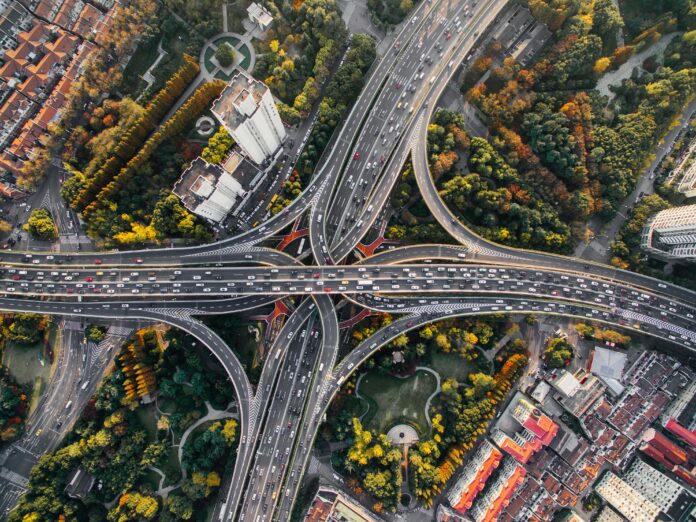By utilizing the power of the Internet of Things (IoT), the concept of smart cities is transforming urban areas into more sustainable, livable, and efficient environments. IoT technology links disparate systems and devices, allowing cities to gather and evaluate data, enhance services, and raise citizen quality of life. This article examines the use of IoT for urban development in smart cities, with a particular emphasis on public safety, energy management, and transportation.
Smart Transportation
Traffic Management and Optimization
The transportation sector is one of the most important uses of IoT in smart cities. To monitor traffic flow and congestion, Internet of Things (IoT) sensors and devices are deployed on roadways, traffic signals, and public transportation networks. City planners can better manage traffic flow, lessen congestion, and optimize traffic light timings with the use of real-time data gathered from these sensors. In addition to offering drivers real-time updates on traffic conditions, intelligent traffic management systems can also recommend alternate routes to minimize delays.
Public Transportation Efficiency
IoT technology provides real-time information on occupancy levels, maintenance requirements, and bus and train schedules, which improves the efficiency of public transportation systems. Through smartphone apps, commuters can obtain precise arrival and departure times, which facilitates trip planning. Furthermore, IoT-enabled predictive maintenance can spot possible problems with vehicles used for public transportation before they become serious problems, which lowers downtime and increases reliability.
Energy Management
Smart Grids
Smart grids, which use IoT to improve the efficiency and dependability of energy distribution, are an essential part of smart cities. Real-time monitoring of energy consumption patterns by IoT sensors helps utility companies better balance supply and demand. Moreover, power outages can be promptly detected and handled by smart grids, reducing downtime and enhancing service dependability.
Energy-Efficient Buildings
By optimizing lighting, other energy-consuming devices, and HVAC (heating, ventilation, and air conditioning) systems, IoT technology helps to create energy-efficient buildings. Energy costs and waste can be minimized through the use of smart thermostats, sensors, and automated systems that modify energy usage in response to occupancy and outside factors. These systems improve the energy efficiency of the city as a whole in addition to helping specific buildings.
Public Safety and Security
Surveillance and Emergency Response
In smart cities, IoT is essential to improving security and public safety. Real-time monitoring and alerts for a range of incidents, including crimes, accidents, and natural disasters, are made possible by interconnected surveillance cameras, sensors, and emergency response systems. Law enforcement and emergency responders can act more swiftly and effectively thanks to this real-time data, which could improve response times and even save lives.
Disaster Management
When it comes to environmental conditions and infrastructure status, IoT devices can offer vital information during natural disasters like hurricanes, earthquakes, and floods. City officials can more efficiently plan evacuations, allocate resources, and interact with citizens thanks to this information. IoT technology aids in the assessment of damage and makes it easier to restore vital services, which helps with post-disaster recovery efforts.
Waste Management and Environmental Monitoring
Smart Waste Collection
Waste management systems with IoT capabilities optimize waste collection and disposal in smart cities. Trash can sensors keep track of fill levels and alert waste management firms when it’s time to empty the bins. This data-driven strategy minimizes the environmental impact of waste collection vehicles, cuts operational expenses, and eliminates pointless collection trips.
Air and Water Quality Monitoring
Real-time monitoring of the quality of the air and water is facilitated by IoT sensors, which give citizens and city officials useful information. By detecting pollutants and contaminants, these sensors enable prompt environmental issue resolution. Smart cities can take proactive steps to lower pollution levels and improve public health by regularly monitoring environmental conditions.
In conclusion, urban development is undergoing a revolution thanks to the incorporation of IoT technology in smart cities. IoT offers the means to build more effective, sustainable, and livable urban environments, from improving public safety and environmental monitoring to streamlining transportation and energy management. The Internet of Things (IoT) will play an increasingly important role in smart cities as technology develops, spurring additional innovations in urban planning.

